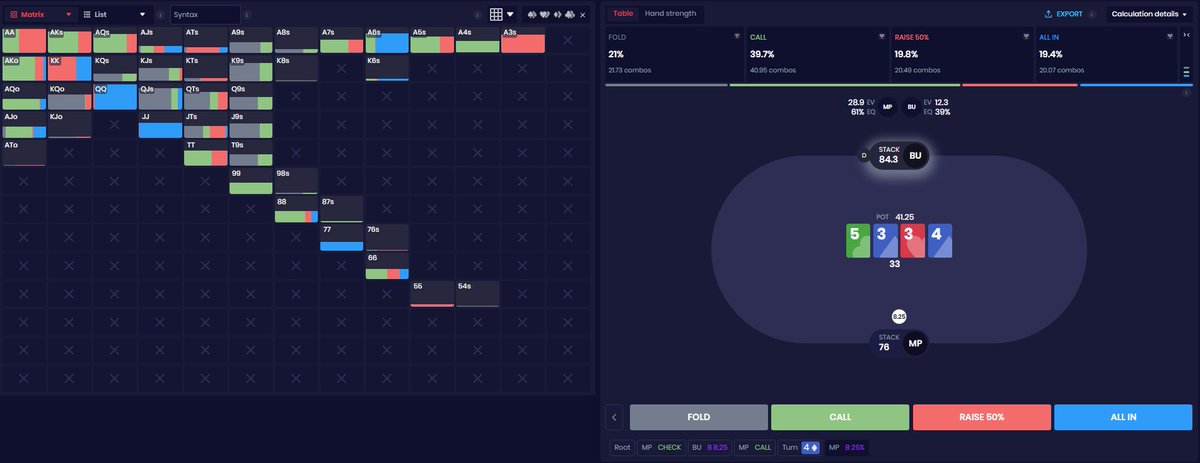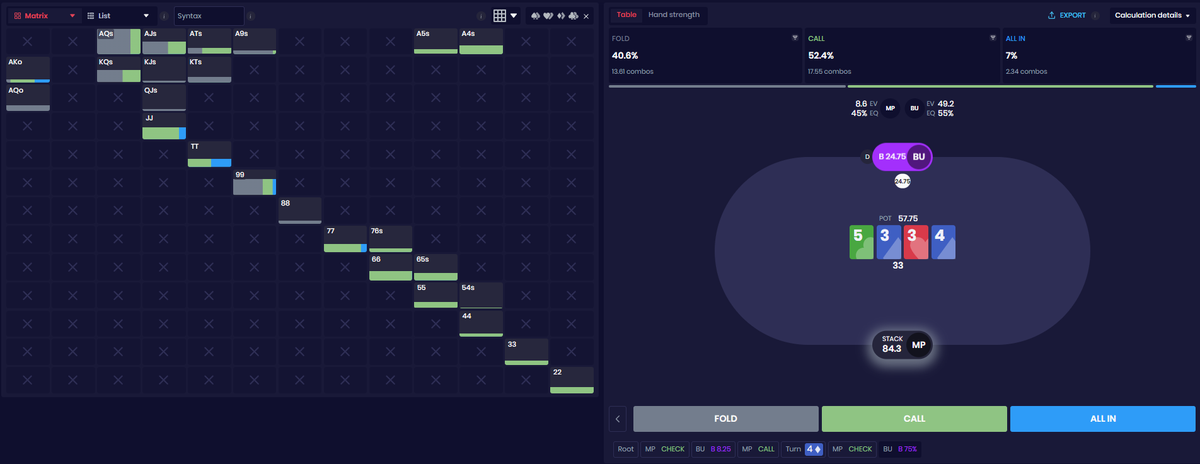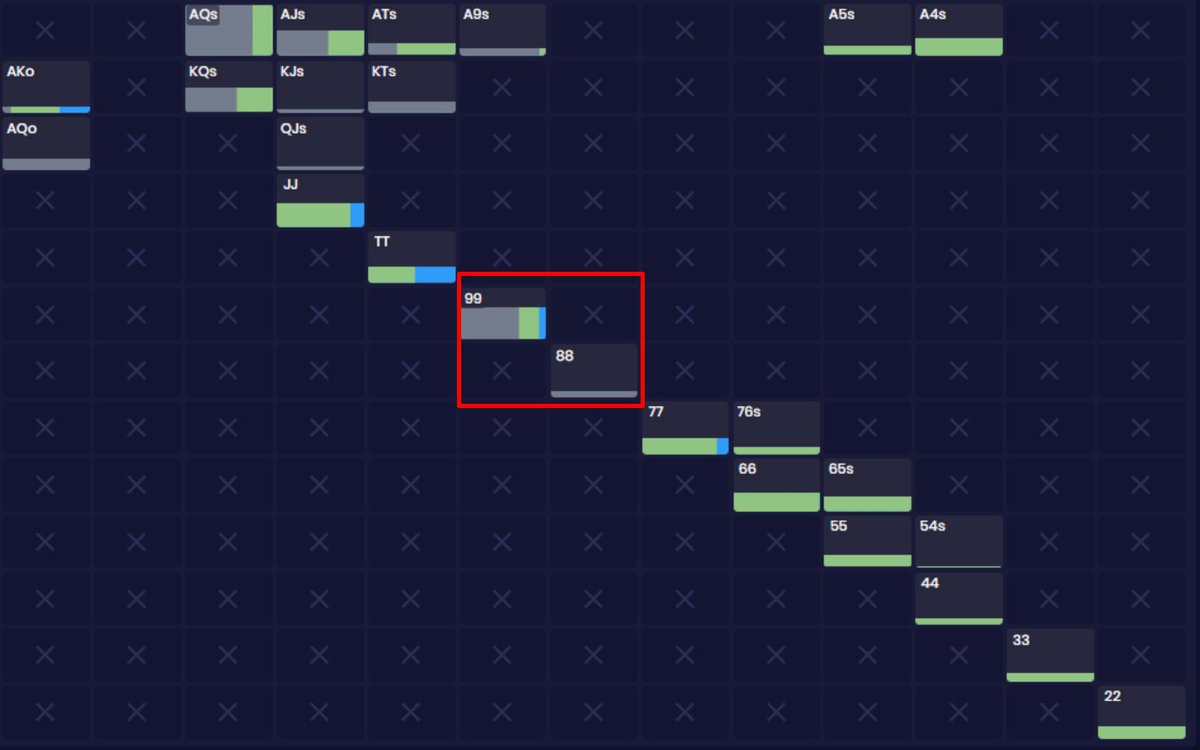Poker is easy when you river the nuts but it's hard when you only beat a bluff
In today’s solver hand breakdown we’re going look at how a hand plays account in a solver across each street.
🧵👇
In today’s solver hand breakdown we’re going look at how a hand plays account in a solver across each street.
🧵👇

1/ Flop: OOP checks their entire range and IP bets 50% pot at a very high frequency. OOP continues by calling all their pocket pairs along with some of their best ace-highs and king-highs with backdoor flush draws. 





2/ Turn: On this low turn card OOP is actually meant to donk 25% pot at a reasonable frequency. All the overcards missed. Ace-highs now have additional gutshot equity so OOP bets out small to “protect” their pocket pairs, some flush draws, overcards and gutshots. 

3/ We didn’t end up in this node as hero checked but this is how it would have looked for IP facing a donk lead.
IP continues calling a lot of their ace highs, whilst raising for value with many of their strongest pocket pairs and bluff raising some ace-highs.
IP continues calling a lot of their ace highs, whilst raising for value with many of their strongest pocket pairs and bluff raising some ace-highs.

4/ Let’s look at what happened in the actual hand: OOP checks and IP barrels for 75% pot. This range contains most of the strongest overpairs but we also see some lower pocket pairs, ace-highs and some bluffs from naked overcards. J9ss is always a bet here. 

5/ OOP now starts to fold the overcards that didn’t pick up a flush draw aside from AK. Interestingly enough we also fold some 99 and 88 combos. Note that 77, 66 and 22 are clear calls. This is because they can improve to a straight. 

6/ We now arrive at river. OOP checks range and IP shoves all-in with all their overpairs and better. Bluffs are selected from hands that don’t block folds that OOP has (missed ace-high flush draws). J9ss blocks JJ and unblocks diamond flush draws making it a good bluff hand. 

7/ Here facing the shove OOP now faces a similar decision to calling the turn when they have an under pair. We’re losing to the IP value range and only beat bluffs. 

8/ So if we look back at the turn decision to fold 99 and 88 some of the time, we can see that if we had always called, then we would have to face this river decision way more frequently. 

9/ This is a problem with multi-street bluffcatching. We now face the same 0ev decision but the pot is bigger. Solvers show that it can be correct to fold bluffcatchers on an earlier street — the runout can get worse, improving IP’s bluffs as well.
10/ We also saw before that OOP goes for the turn donk approach to neutralize the double barrelling strategy. This is because IP is more constrained when value-raising on the turn facing a donk compared to facing a check (some hands opt to just call the small donk as well).
11/ In summary:
-Fold bluffcatchers on earlier streets that can’t improve often to beat value
-Donk OOP for a small size when a turn card doesn’t improve IP’s range
-Barrel IP w/ overcards (don't always need draws)
-When bluffing river, unblock folds and block calls
-Fold bluffcatchers on earlier streets that can’t improve often to beat value
-Donk OOP for a small size when a turn card doesn’t improve IP’s range
-Barrel IP w/ overcards (don't always need draws)
-When bluffing river, unblock folds and block calls
If this solver breakdown helped you, share the wisdom.
Follow us for more solver breakdowns and poker insights.
♠️❤️♦️♣️
#poker #GTO #deepsolver
Follow us for more solver breakdowns and poker insights.
♠️❤️♦️♣️
#poker #GTO #deepsolver
@threadreaderapp unroll
• • •
Missing some Tweet in this thread? You can try to
force a refresh

 Read on Twitter
Read on Twitter






